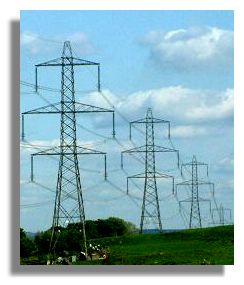Tryjanowsky, P., Sparks, T.H., Jerzak, L., Rosin, Z.M., Skorka, P. 2013. A paradox for conservation: electricity pylons may benefit avian diversity in intensive farmland. Conservation Letters.
Available online:
http://onlinelibrary.wiley.com/doi/10.1111/conl.12022/abstract;jsessionid=33E7AA9B53D37C9F731A9DAE75BC913D.d01t01
Humans don’t have to ruin EVERYTHING!
Over most of the semester, the feeling in the class has
been, well if we didn’t screw it up in the first place, we would not have to
fix it! Here is a case that shows that our development isn’t necessarily
negative for every species.
Just this year, scientists in Poland did a study to show how
bird biodiversity was impacted in areas near power lines. These giant power
poles, also called pylons, are thought to be an ugly human interference, that
get in the way of the natural beauty. In 2011, these Polish scientists did a
study to determine if this was actually so.
During the study, Tryjanowski et al. Counted nesting bird
populations twice in 2011under pylons, under electricity high-voltage
power-lines and in adjacent open fields. Both species number and bird abundance
were significantly higher under pylons and under power lines at control points
than in open fields. This could be because the birds prefer the habitat that
has been altered by humans around these sites. Some bird species also use the
poles themselves as nesting structures, or song posts. Bird abundance was even
higher in areas around the pylons where the vegetation was allowed to develop
into shrubs.
Although we typically associate human behaviour with
destruction – destroying everything in our paths – this case demonstrates that
sometimes man made structures are actually beneficial to wildlife. (Even if
this may not be intentional!)
So there you go, not all of the repercussions for our
consumerist needs are destructive!
Word Count: 300









